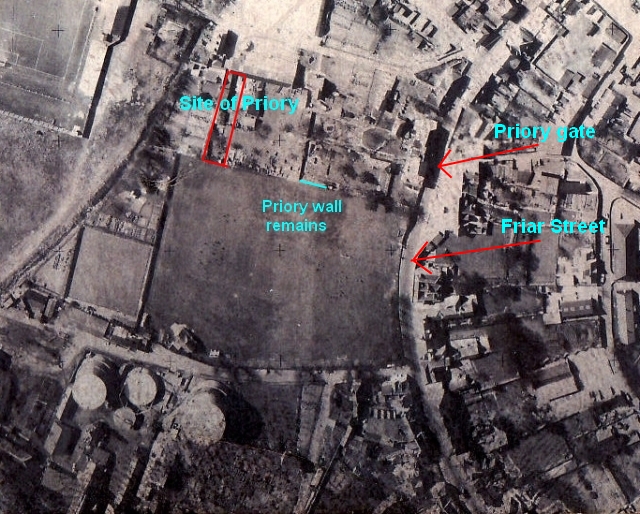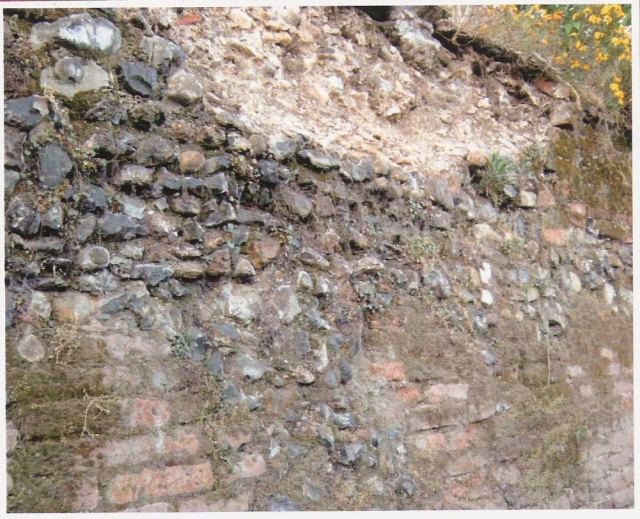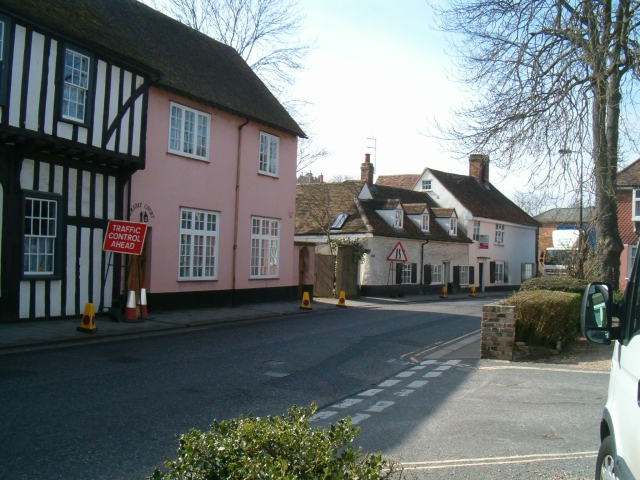The following article is reproduced from a talk given by Barry Wall at the Quay Theatre Sudbury in March 2010
The Dominican Friars
The vision of the endless worship of God, undistracted by earthly cares and responsibilities was the basis for the foundation of all the monastic orders, Benedictine, Augustinian, Carthusian etc.
They wanted their followers to withdraw from the world, leave pastoral work and evangelism to the secular clergy and discipline themselves into devout, privileged families under the paternal care of an Abbot or Prior.
This vision was not shared by St. Francis in Italy or St. Dominic in South France and Spain. To both of them it was a totally mistaken ideal, ignoring Christ’s specific command to the Twelve to go into the world and preach repentance and the forgiveness of sins.
In the early 13th century, within three years of one another, they had each gathered round them groups of young men keen to preach the gospel to all people everywhere as Christ commanded. To take nothing for their journey save a staff only, no bread, and no money but be shod with sandals, St. Francis believed absolute poverty was necessary for anyone giving his life to Christ. His followers became the Greyfriars.
St. Dominic expected his Blackfriars or Preaching Friars to lead similar lives, but he also asked that they should be well read in the scriptures and early writings because he wanted them efficiently armed to hunt and kill the heresies that he feared were threatening the life of the Church.
St Francis feared that “learning” was capable of distracting his followers from their true mission of imitating Christ.
Nevertheless within 50 years the Franciscans in England were as renowned as the Dominicans for their learning.
First Dominicans arrived in the south of England in 1221 and the Franciscans followed three years later.

The Sudbury Priory, founded by Baldwin de Shimpling and Chabilla his wife was of the second generation of Dominicans and was set up in 1272.
Sudbury at that time belonged to Gilbert de Clare who the year previously had divorced his wife, a niece of HenryIII, on the grounds of hypochondria.
The site of the Priory was outside the town ditch but accessible from Church Street and it covered five acres (see aerial photograph)
The modest buildings would have been timber-framed with possibly a flint and rubble chapel
They were well received in Sudbury, which was fast becoming a prosperous wool town.
1290 Gilbert de Clare married the sister of Edward 1st, Joan of Acre with a stipulation.
1291 The friars were granted 100 shillings from the executors of the late Queen Eleanor
1314 Gilbert’s son, also Gilbert, had inherited his father’s estates but was killed, childless at Bannockburn. The stipulation comes into force. Elizabeth de Burgh, his sister, inherits Sudbury.
1316 The Chapter of the Dominicans is held at Sudbury The king sends a donation to cover expenses of entertainment.
During the next thirty years the town is expanding and the Ditch is being filled in and the earthbanks removed as Friars Street is formed.


1352 The Friars are given eight and a half acres of land adjoining theirs by Nigel Theobald. It is from about this time when the Priory House, familiar to us through Joshua Kirby’s engraving, was built. From this time the Priory wall was also constructed. (The remains can still be seen today, which is now the oldest structure in existance in Sudbury).
In 1368 Sudbury was again the venue for the Chapter of the Dominicans and again the King gave a donation to cover entertainment expenses. This time however they have a handsome setting for the event, 1380 Nigel Theobald’s son, Simon of Sudbury, gives them a piece of land at Ballingdon Hall, 20ft square, containing a spring from which through a subterranean pipe they obtained a fresh water supply.
The spring is still there at Ballingdon Hall and it feeds a pond.
From wills of the time it is obvious that the Friars were respected and popular. Time and time again there are bequests for the preaching friars at Sudbury. Their church was much desired for burials. It was apparently quite large. We know it had a cloister because John Brown, a carpenter in 1454 requests to be buried in it. Guild of St. James.
Thomas Fen, Chaplain and Rector of Borley in 1473 asks to be buried before the image of St. Mary in the church of the Friar Preachers.
Forty persons of note are recorded in Fuller’ s Worthies as being buried within the church.

1425-40 They built a new gatehouse. Opposite is the carriage sweep from which the photograph was taken below of the Ship and Star cottages built against the wall and formed a lodging house.
When the Priory was closed by Henry VIII on 8th October 1539 the value was given as £222.18s.0d. The last Prior John Cotton moved across the road into a house on the carriage sweep and the remaining friars were pensioned off.

One year later the Priory and all its possessions were granted to Thomas Eden and Griselda his wife, clerk to the Star Chamber. He immediately pulled down the Church and adapted the house to suit his requirements. Sir James Marriott of Twinstead eventually demolished it in 1820.
John Hodgkin, a friar from Sudbury was appointed vicar of Walden in Essex in 1541. He was a Doctor of Divinity from Cambridge who taught Theology at the priory. In 1529 he had been granted the use of a house and garden west of the priory with stabling for fifteen shillings per annum. In 1537 he was created Bishop of Bedford but remained in Sudbury until forced to vacate when the Priory was closed. He was living within yards of the Priory church when Eden set about demolishing it. When he went to Saffron Walden he took the chancel roof with him with the help of Chancellor Audley.

